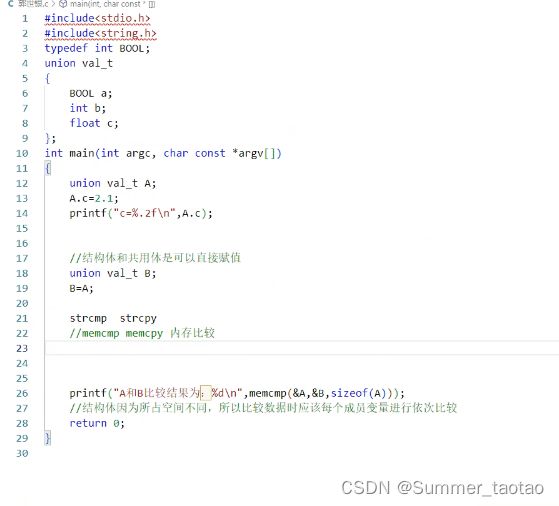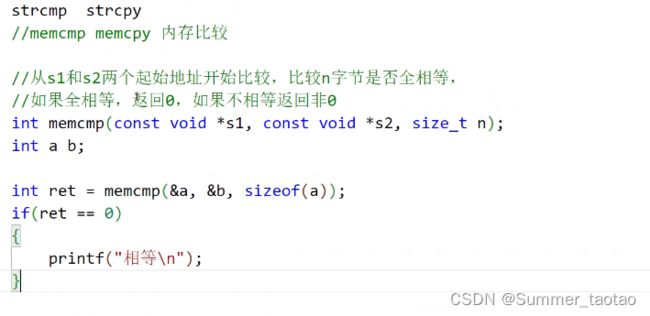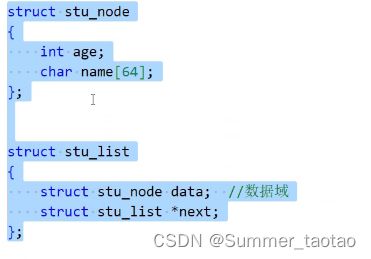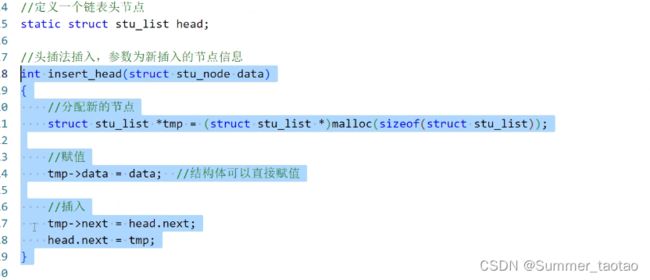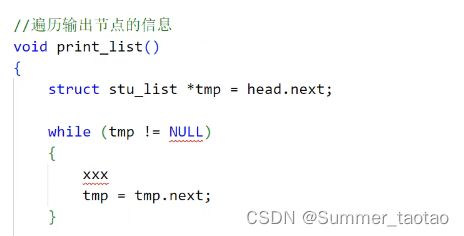- 数据结构的基本概念和术语的一些介绍
王哈哈嘻嘻噜噜
数据结构
数据:是客观事物的符号表示,包括两种:数值型(整数,实数)和非数值型(文字,图形,声音数据元素:是数据的基本单位,通常作为一个整体进行表示。与数据的关系:是数据集合的个体数据项:组成数据元素的不可分割的最小单位。以上三者的关系:数据>数据元素>数据项例如:学生表>个人记录>学生的单个年龄,姓名数据对象:是性质相同的数据元素的集合与数据的关系:是数据集合的一个子集例如:整数数据对象是集合N{0,+-
- 为什么链表和顺序表删除数据的时间复杂度都为O(n),但是链表删除数据还更快
AredRabbit
数据结构算法链表数组
链表和顺序表(如数组)在删除数据时的时间复杂度通常都是O(n),但链表在实际操作中可能比顺序表更快。这是因为时间复杂度只描述了算法随输入规模增长的趋势,而没有考虑常数因子和具体操作的细节。以下是详细解释:1.时间复杂度分析顺序表(数组)删除操作:在顺序表中删除一个元素后,需要将后续的所有元素向前移动一位,以填补删除后的空缺。时间复杂度:移动元素的操作需要遍历后续的所有元素,因此时间复杂度为O(n)
- 学习数据结构是学完一章立马做题吗?
AredRabbit
数据结构c++学习方法
学习数据结构时,是否学完一章后立即做题还是等到第二天再做,取决于个人的学习习惯和记忆特点。以下是一些建议,帮助你做出更适合自己的选择:1.学完一章后立即做题优点:巩固知识:刚学完一章时,知识还新鲜在脑海中,立即做题可以帮助你更好地理解和巩固所学内容。发现问题:通过做题可以及时发现理解上的漏洞或误区,便于立即纠正。提高效率:趁热打铁,避免拖延,学习效果更好。适合人群:记忆力较强,能够快速吸收新知识的
- 数据库索引管理:不用的索引应该直接删除吗?
后端数据库mysql
一、索引的本质与价值:双刃剑的深层解析数据库索引的本质是通过B+Tree、Hash等数据结构实现的快速检索机制,其核心价值在于将时间复杂度从O(n)降为O(logn)。但索引的维护成本常常被低估:写操作成本倍增:每次INSERT操作需更新所有相关索引,某电商平台实测显示,每增加一个索引,TPS下降8-12%存储空间占用指数增长:复合索引的存储需求遵循组合数公式C(n,k),当字段数n增加时,空间消
- 数据库索引管理:不用的索引应该直接删除吗?
后端数据库mysql
一、索引的本质与价值:双刃剑的深层解析数据库索引的本质是通过B+Tree、Hash等数据结构实现的快速检索机制,其核心价值在于将时间复杂度从O(n)降为O(logn)。但索引的维护成本常常被低估:写操作成本倍增:每次INSERT操作需更新所有相关索引,某电商平台实测显示,每增加一个索引,TPS下降8-12%存储空间占用指数增长:复合索引的存储需求遵循组合数公式C(n,k),当字段数n增加时,空间消
- 【LeetCode系列】Google面试题
烊萌
LeetCode经典题目讲解LeetCode系列Google面试题讲解
Google面试题目录Google面试题LeetCode14最长公共前缀1、分析2、代码LeetCode20有效的括号1、分析2、代码LeetCode43字符串相乘1、分析2、代码LeetCode48旋转图像1、分析2、代码LeetCode31下一个排列1、分析2、代码LeetCode23合并K个排序链表1、分析2、代码LeetCode33搜索旋转排序数组1、分析2、代码LeetCode11盛最多
- 算法竞赛中常用的STL容器
メ稀饭 你的笑
stl算法c++开发语言
目录前言一、STL是什么?二、竞赛中常见STL的容器1.string类2.vector3.stack4.queue5.priority_queue6.set7.map8.pair总结前言在我们的算法竞赛中,为了节约时间,我们不可能去手撕一个数据结构,所以在赛场上我们就要引入STL,以便我们节约时间,能有更多的时间处理更复杂的算法。一、STL是什么?STL(StandardTemplateLibra
- 华为OD面经 - 二战失利C++视觉算法
华为题库c++cjava
24届河南大学本,计算机科学与技术专业。因为考研没有成功,毕业后一直在家准备二战,二战再次失利,gap半年后决定找工作,找了一些国企和私企的面试机会,但一直没有找到满意的offer。经过朋友推荐,决定尝试华为OD的岗位。由于本科期间有做过一些C++相关的项目和开源贡献,投递了C++视觉算法岗位。机考准备:因为考研期间的刷题基础还在,所以准备机考并没有花太多时间。主要集中在数据结构和算法题目上,尤其
- 深入剖析C语言双向链表的实现与应用
共享家9527
数据结构cc语言链表开发语言
目录一、前言二、双向链表的基础概念(一)双向链表的定义(二)双向链表的优势三、C语言实现双向链表的详细解读(一)头文件与数据类型定义(二)双向链表基本操作函数声明(三)双向链表基本操作函数的具体实现节点申请函数BuyListNode链表初始化函数LTInit链表打印函数LTPrint链表判空函数LTEmpty尾插函数LTPushBack尾删函数LTPopBack头插函数LTPushFront头删函
- java栈的实现
晴天ノBye~
java数据结构
目录栈的介绍两种方法实现栈1.数组栈数组的构造:入栈操作出栈:打印数组栈2.链栈链栈的结点构造链栈入栈操作链表的出栈操作链栈的打印总结:附录栈的介绍栈是一种只能在一端进行插入和删除操作的特殊线性表。它按照先进后出的原则存储数据,先进入的数据被压入栈底,最后的数据在栈顶,需要读数据的时候从栈顶开始弹出数据。”特点:先进后出。如图入栈:第一个元素在栈底,最后以个入栈的在栈顶出栈出栈是移出栈顶元素两种方
- 【C++】树状数组的使用、原理、封装类、样例
软件架构师何志丹
#算法基础c++数据结构树状数组求和异或和最值动态开点
前言本博文代码打包下载C++算法与数据结构分类汇总最常见的应用有序集合包括若干整数,求小于x的数量。autoit=s.lower(x),it-s.begin(),这个时间复杂度是O(n)。由于查询和插入交替进行,故不能用向量。树状数组的用途令原始数组是a,长度为n。基础操作一,求前缀和。即∑j:0ia[j]\sum_{j:0}^ia[j]∑j:0ia[j]。时间复杂度:O(logn)。二,a[i]
- 面试__八股
big muscle
Java面试linuxjvm
java解释执行,即时编译(编译成本地代码,效率高,内存占用多,C1,C2)编译优化技术:方法内联,复写传播,无用代码删除字节码就是虚拟机所使用的指令集类加载:加载(获取类的二进制流文件,方法区的数据结构,内存生成这个类的class对象),链接(验证,准备(类变量初始化),解析(符号引用替换为直接引用)),初始化(常量初始化)栈帧主要是局部变量区和操作数栈,方法返回地址,对象头的markword;
- 【初探数据结构】带环链表:原理、判断与数学证明
我想吃余
数据结构篇数据结构链表
欢迎讨论:在阅读过程中有任何疑问,欢迎在评论区留言,我们一起交流学习!点赞、收藏与分享:如果你觉得这篇文章对你有帮助,记得点赞、收藏,并分享给更多对数据结构感兴趣的朋友文章目录一、何为带环链表1.1带环链表的定义1.2典型示例二、环路检测:Floyd判圈算法2.1快慢指针实现2.2算法特性三、数学证明与深度解析3.1步长差为1的必然性证明(快2步/慢1步)3.2广义步长分析(快n步/慢1步)四、环
- 2025年大模型AI产品经理学习路线图:零基础到精通,一篇收藏,开启学习之旅!悄悄努力然后惊艳所有人
AGI大模型老王
人工智能产品经理学习AI大模型大模型学习大模型AI产品经理
随着人工智能技术的发展,尤其是大模型(LargeModel)的兴起,越来越多的企业开始重视这一领域的投入。作为大模型产品经理,你需要具备一系列跨学科的知识和技能,以便有效地推动产品的开发、优化和市场化。以下是一份详细的大模型产品经理学习路线,旨在帮助你构建所需的知识体系,从零基础到精通。一、基础知识阶段1.计算机科学基础数据结构与算法:理解基本的数据结构(如数组、链表、树、图等)和常用算法(如排序
- 计算机学习的五大避坑指南新手必藏
编程诗人华仔
架构设计学习java软件工程golang开发语言c语言python
避坑一:盲目跟风学习编程语言技术性深化:在选择编程语言时,要考虑语言的特点、适用场景以及未来发展趋势。例如,Java适合企业级应用开发,Python在数据分析和人工智能领域有广泛应用,而JavaScript则是前端开发的基础。明确自己的职业发展方向,选择与之匹配的语言进行深入学习。避坑二:忽视基础知识的掌握技术性深化:深入理解算法如排序、搜索等,熟悉常见的数据结构如链表、栈、队列、树等,并掌握设计
- 数据结构--【栈与队列】笔记
ianozo
C++课程笔记数据结构笔记
栈的应用【实验题】使用栈实现后缀表达式计算,其中,在后缀表达式中,输入的数字为整数,且为正数,数字、符号之间用空格隔开,整个后缀表达式用“#”表示结束。其中,整个后缀表达式长度不超过200,每个数字位数不超过10。提示:读取数据的过程中,可以利用栈处理每个数字。输入样例:1123+*#(注:对应的中缀表达式是11*(2+3))623+*5/7-#(注:对应的中缀表达式是6*(2+3)/5-7)输出
- PTA L2 题目合集
不牌不改
#【PTA】c++算法
L2-001紧急救援(25分)题解链接L2-002链表去重(25分)#include#definePISpair#definevalfirst#definenesecondusingnamespacestd;constintN=1e6+10;mapMap;stringst_address;intn,st[N];vectorv;intmain(){cin>>st_address>>n;for(int
- 【PTA】团体程序设计天梯赛-练习集 L2题目总结(完)
karshey
我的ACM之路
模拟题L2-002链表去重(链表模拟)L2-002链表去重用两个数组分别表示键值和下一个结点来模拟链表。注意可能存在无重复键值的绝对值的情况。#includeusingnamespacestd;#definefir(i,a,n)for(inti=a;imp;inta[N],ne[N];//某个地址的键值、下一个地址structnode{intv,d;};vectorans1,ans2;intmai
- LeetCode Hot100刷题——反转链表(迭代+递归)
圈圈编码
leetcode链表算法
206.反转链表给你单链表的头节点head,请你反转链表,并返回反转后的链表。示例1:输入:head=[1,2,3,4,5]输出:[5,4,3,2,1]示例2:输入:head=[1,2]输出:[2,1]示例3:输入:head=[]输出:[]提示:链表中节点的数目范围是[0,5000]-50002->3->4->5->null,反转后变成null<-1<-2<-3<-4<-5。那在迭代的时候,初始状
- UML面向对象建模与设计——笔记(二)
忧愁的awe
uml面向对象
UML面向对象建模与设计(第二版)笔记——第二部分:分析与设计开发过程1系统构思2分析3系统设计4类设计5实现6测试7培训8部署9开发生命周期系统构思1阐释概念2准备问题陈述系统分析1领域分析1创建领域类模型2分析领域状态模型3领域交互模型2应用分析1应用交互模型2应用类模型3应用状态模型系统设计类设计1填补空白区2实现用例3设计算法1选择算法2选择数据结构3定义内部类的操作4把操作分配给个类4向
- 数据结构(蓝桥杯常考点)
刃神太酷啦
蓝桥杯C++组C++数据结构
数据结构前言:这个是针对于蓝桥杯竞赛常考的数据结构内容,基础算法比如高精度这些会在下期给大家总结数据结构竞赛中,时间复杂度不能超过10的7次方(1秒)到10的8次方(2秒)空间限制:int类型数组总大小不能超过3*10的7次方,二维数组不能超过5000*5000顺序表就是一个数组加上标记数组中有多少元素的数(n)eg:尾删就是n--注意事项:在实行插入和删除操作时,记得检查数组中有无位置可以进行v
- 【C++设计模式】第十六篇:迭代器模式(Iterator)
JuicyActiveGilbert
C++设计模式c++设计模式迭代器模式
注意:复现代码时,确保VS2022使用C++17/20标准以支持现代特性。遍历聚合对象的统一方式1.模式定义与用途核心思想迭代器模式:提供一种方法顺序访问聚合对象的元素,而无需暴露其内部表示。关键用途:1.统一遍历接口:为不同数据结构(如数组、链表、树)提供一致的遍历方式。2.支持多种遍历策略:前向、反向、条件过滤等。3.简化聚合类设计:将遍历逻辑从聚合类中分离。经典场景STL容器的迭代器(如st
- 什么是 YAML及OCP、IBM CP4BA中的YAML文件解析
自由鬼
运维技术IT应用探讨IBM产品技术服务器前端数据库ocpcp4baibm
YAML(YAMLAin'tMarkupLanguage)是一种人类友好的数据序列化格式。它的设计目标是易于人类阅读和编写,同时也易于机器解析和生成。YAML常用于配置文件、数据交换以及跨语言数据持久化等场景。一、YAML介绍1、YAML的主要特点:易于阅读:YAML语法简洁明了,使用缩进和符号来表示数据结构,避免了像XML那样繁琐的标签,以及像JSON那样大量的花括号和方括号。数据序列化:YAM
- 玩转python: 掌握Python数据结构之字典
千益
浅显易懂玩转python数据结构python开发语言
字典(Dictionary)是Python中一种非常强大的数据结构,它以键值对(Key-ValuePair)的形式存储数据。字典的特点是快速查找、灵活存储和高效操作。想象一下字典就像一本电话簿:通过名字(键)可以快速找到对应的电话号码(值)。本文将带你深入理解字典的概念,并通过丰富的案例展示其实际应用。字典的常见方法以下是字典的20个常见方法及其功能的简要说明:方法名功能描述clear()移除字典
- json文件如何转为txt
一筐猪的头发丝
将JSON文件转换为txt文件的方法如下:使用编程语言读取JSON文件并将其解析为数据结构(例如,字典或列表)。对数据结构进行操作以将其转换为想要在txt文件中输出的格式。将转换后的数据写入txt文件。具体实现可以根据使用的编程语言和需求不同而有所不同。
- Redis 架构师核心知识掌握概览
将臣三代
Redisredis数据库缓存
作为架构师,掌握Redis的核心知识点和学习内容是非常重要的,因为Redis是一个高性能的键值存储系统,广泛应用于缓存、会话管理、消息队列等场景。以下是关于Redis需要学习和掌握的核心知识点:核心知识点基础概念:数据结构:了解Redis支持的五种基本数据类型:字符串(String)、哈希(Hash)、列表(List)、集合(Set)和有序集合(SortedSet)。命令操作:熟悉常用的Redis
- 【算法】010、合并两个有序链表
呆呆的猫
算法算法链表数据结构
【算法】010、合并两个有序链表文章目录一、合并两个有序链表1.1思路1.2多语言解法一、合并两个有序链表1.1思路//gopackagemainimport("fmt""strconv")typeListNodestruct{ValintNext*ListNode}func(n*ListNode)String()(ansstring){for;n!=nil;n=n.Next{ans+="=>"a
- 给求职者的建议:软件工程师
追寻向上
pythonjavac语言软件工程
一、编程基础:构建核心能力语言选择与学习首推Python:语法简洁,适合入门。推荐书籍《Python编程:从入门到实践》,重点掌握列表推导、装饰器、文件操作。Java/C++进阶:理解内存管理(如JVM垃圾回收)、多线程编程(synchronized关键字)。推荐《Java核心技术卷Ⅰ》。辅助语言:JavaScript(必学)、Go或Rust(扩展视野)。数据结构与算法基础必刷:数组、链表、哈希表
- Java多线程与高并发专题——什么是阻塞队列?
黄雪超
技术基础java开发语言并发编程
引入阻塞队列(BlockingQueue)是一种线程安全的队列数据结构,它的主要特点是:线程安全:多个线程可以安全地同时访问队列。阻塞操作:当队列为空时,从队列中获取元素的操作会被阻塞,直到队列中有元素可用;当队列为满时,向队列中插入元素的操作会被阻塞,直到队列有空间可用。BlockingQueueBlockingQueue继承了Queue接口,是队列的一种。Queue和BlockingQueue
- leetcode138.随机链表的复制
李boyang
算法链表哈希算法数据结构
leetcode138.随机链表的复制随机链表的复制首先,我们需要一个类型为的哈希表,命名为hash,hash.first存的是旧链表的节点,hash.second存的是新链表的结点,一次遍历旧链表后,我们的就把新节点“挂”在与旧链表一一对应的旧节点下while(cur){hash.insert({cur,newNode(cur->val)});cur=cur->next;}此时新节点的next和
- 如何用ruby来写hadoop的mapreduce并生成jar包
wudixiaotie
mapreduce
ruby来写hadoop的mapreduce,我用的方法是rubydoop。怎么配置环境呢:
1.安装rvm:
不说了 网上有
2.安装ruby:
由于我以前是做ruby的,所以习惯性的先安装了ruby,起码调试起来比jruby快多了。
3.安装jruby:
rvm install jruby然后等待安
- java编程思想 -- 访问控制权限
百合不是茶
java访问控制权限单例模式
访问权限是java中一个比较中要的知识点,它规定者什么方法可以访问,什么不可以访问
一:包访问权限;
自定义包:
package com.wj.control;
//包
public class Demo {
//定义一个无参的方法
public void DemoPackage(){
System.out.println("调用
- [生物与医学]请审慎食用小龙虾
comsci
生物
现在的餐馆里面出售的小龙虾,有一些是在野外捕捉的,这些小龙虾身体里面可能带有某些病毒和细菌,人食用以后可能会导致一些疾病,严重的甚至会死亡.....
所以,参加聚餐的时候,最好不要点小龙虾...就吃养殖的猪肉,牛肉,羊肉和鱼,等动物蛋白质
- org.apache.jasper.JasperException: Unable to compile class for JSP:
商人shang
maven2.2jdk1.8
环境: jdk1.8 maven tomcat7-maven-plugin 2.0
原因: tomcat7-maven-plugin 2.0 不知吃 jdk 1.8,换成 tomcat7-maven-plugin 2.2就行,即
<plugin>
- 你的垃圾你处理掉了吗?GC
oloz
GC
前序:本人菜鸟,此文研究学习来自网络,各位牛牛多指教
1.垃圾收集算法的核心思想
Java语言建立了垃圾收集机制,用以跟踪正在使用的对象和发现并回收不再使用(引用)的对象。该机制可以有效防范动态内存分配中可能发生的两个危险:因内存垃圾过多而引发的内存耗尽,以及不恰当的内存释放所造成的内存非法引用。
垃圾收集算法的核心思想是:对虚拟机可用内存空间,即堆空间中的对象进行识别
- shiro 和 SESSSION
杨白白
shiro
shiro 在web项目里默认使用的是web容器提供的session,也就是说shiro使用的session是web容器产生的,并不是自己产生的,在用于非web环境时可用其他来源代替。在web工程启动的时候它就和容器绑定在了一起,这是通过web.xml里面的shiroFilter实现的。通过session.getSession()方法会在浏览器cokkice产生JESSIONID,当关闭浏览器,此
- 移动互联网终端 淘宝客如何实现盈利
小桔子
移動客戶端淘客淘寶App
2012年淘宝联盟平台为站长和淘宝客带来的分成收入突破30亿元,同比增长100%。而来自移动端的分成达1亿元,其中美丽说、蘑菇街、果库、口袋购物等App运营商分成近5000万元。 可以看出,虽然目前阶段PC端对于淘客而言仍旧是盈利的大头,但移动端已经呈现出爆发之势。而且这个势头将随着智能终端(手机,平板)的加速普及而更加迅猛
- wordpress小工具制作
aichenglong
wordpress小工具
wordpress 使用侧边栏的小工具,很方便调整页面结构
小工具的制作过程
1 在自己的主题文件中新建一个文件夹(如widget),在文件夹中创建一个php(AWP_posts-category.php)
小工具是一个类,想侧边栏一样,还得使用代码注册,他才可以再后台使用,基本的代码一层不变
<?php
class AWP_Post_Category extends WP_Wi
- JS微信分享
AILIKES
js
// 所有功能必须包含在 WeixinApi.ready 中进行
WeixinApi.ready(function(Api) {
// 微信分享的数据
var wxData = {
&nb
- 封装探讨
百合不是茶
JAVA面向对象 封装
//封装 属性 方法 将某些东西包装在一起,通过创建对象或使用静态的方法来调用,称为封装;封装其实就是有选择性地公开或隐藏某些信息,它解决了数据的安全性问题,增加代码的可读性和可维护性
在 Aname类中申明三个属性,将其封装在一个类中:通过对象来调用
例如 1:
//属性 将其设为私有
姓名 name 可以公开
- jquery radio/checkbox change事件不能触发的问题
bijian1013
JavaScriptjquery
我想让radio来控制当前我选择的是机动车还是特种车,如下所示:
<html>
<head>
<script src="http://ajax.googleapis.com/ajax/libs/jquery/1.7.1/jquery.min.js" type="text/javascript"><
- AngularJS中安全性措施
bijian1013
JavaScriptAngularJS安全性XSRFJSON漏洞
在使用web应用中,安全性是应该首要考虑的一个问题。AngularJS提供了一些辅助机制,用来防护来自两个常见攻击方向的网络攻击。
一.JSON漏洞
当使用一个GET请求获取JSON数组信息的时候(尤其是当这一信息非常敏感,
- [Maven学习笔记九]Maven发布web项目
bit1129
maven
基于Maven的web项目的标准项目结构
user-project
user-core
user-service
user-web
src
- 【Hive七】Hive用户自定义聚合函数(UDAF)
bit1129
hive
用户自定义聚合函数,用户提供的多个入参通过聚合计算(求和、求最大值、求最小值)得到一个聚合计算结果的函数。
问题:UDF也可以提供输入多个参数然后输出一个结果的运算,比如加法运算add(3,5),add这个UDF需要实现UDF的evaluate方法,那么UDF和UDAF的实质分别究竟是什么?
Double evaluate(Double a, Double b)
- 通过 nginx-lua 给 Nginx 增加 OAuth 支持
ronin47
前言:我们使用Nginx的Lua中间件建立了OAuth2认证和授权层。如果你也有此打算,阅读下面的文档,实现自动化并获得收益。SeatGeek 在过去几年中取得了发展,我们已经积累了不少针对各种任务的不同管理接口。我们通常为新的展示需求创建新模块,比如我们自己的博客、图表等。我们还定期开发内部工具来处理诸如部署、可视化操作及事件处理等事务。在处理这些事务中,我们使用了几个不同的接口来认证:
&n
- 利用tomcat-redis-session-manager做session同步时自定义类对象属性保存不上的解决方法
bsr1983
session
在利用tomcat-redis-session-manager做session同步时,遇到了在session保存一个自定义对象时,修改该对象中的某个属性,session未进行序列化,属性没有被存储到redis中。 在 tomcat-redis-session-manager的github上有如下说明: Session Change Tracking
As noted in the &qu
- 《代码大全》表驱动法-Table Driven Approach-1
bylijinnan
java算法
关于Table Driven Approach的一篇非常好的文章:
http://www.codeproject.com/Articles/42732/Table-driven-Approach
package com.ljn.base;
import java.util.Random;
public class TableDriven {
public
- Sybase封锁原理
chicony
Sybase
昨天在操作Sybase IQ12.7时意外操作造成了数据库表锁定,不能删除被锁定表数据也不能往其中写入数据。由于着急往该表抽入数据,因此立马着手解决该表的解锁问题。 无奈此前没有接触过Sybase IQ12.7这套数据库产品,加之当时已属于下班时间无法求助于支持人员支持,因此只有借助搜索引擎强大的
- java异常处理机制
CrazyMizzz
java
java异常关键字有以下几个,分别为 try catch final throw throws
他们的定义分别为
try: Opening exception-handling statement.
catch: Captures the exception.
finally: Runs its code before terminating
- hive 数据插入DML语法汇总
daizj
hiveDML数据插入
Hive的数据插入DML语法汇总1、Loading files into tables语法:1) LOAD DATA [LOCAL] INPATH 'filepath' [OVERWRITE] INTO TABLE tablename [PARTITION (partcol1=val1, partcol2=val2 ...)]解释:1)、上面命令执行环境为hive客户端环境下: hive>l
- 工厂设计模式
dcj3sjt126com
设计模式
使用设计模式是促进最佳实践和良好设计的好办法。设计模式可以提供针对常见的编程问题的灵活的解决方案。 工厂模式
工厂模式(Factory)允许你在代码执行时实例化对象。它之所以被称为工厂模式是因为它负责“生产”对象。工厂方法的参数是你要生成的对象对应的类名称。
Example #1 调用工厂方法(带参数)
<?phpclass Example{
- mysql字符串查找函数
dcj3sjt126com
mysql
FIND_IN_SET(str,strlist)
假如字符串str 在由N 子链组成的字符串列表strlist 中,则返回值的范围在1到 N 之间。一个字符串列表就是一个由一些被‘,’符号分开的自链组成的字符串。如果第一个参数是一个常数字符串,而第二个是type SET列,则 FIND_IN_SET() 函数被优化,使用比特计算。如果str不在strlist 或st
- jvm内存管理
easterfly
jvm
一、JVM堆内存的划分
分为年轻代和年老代。年轻代又分为三部分:一个eden,两个survivor。
工作过程是这样的:e区空间满了后,执行minor gc,存活下来的对象放入s0, 对s0仍会进行minor gc,存活下来的的对象放入s1中,对s1同样执行minor gc,依旧存活的对象就放入年老代中;
年老代满了之后会执行major gc,这个是stop the word模式,执行
- CentOS-6.3安装配置JDK-8
gengzg
centos
JAVA_HOME=/usr/java/jdk1.8.0_45
JRE_HOME=/usr/java/jdk1.8.0_45/jre
PATH=$PATH:$JAVA_HOME/bin:$JRE_HOME/bin
CLASSPATH=.:$JAVA_HOME/lib/dt.jar:$JAVA_HOME/lib/tools.jar:$JRE_HOME/lib
export JAVA_HOME
- 【转】关于web路径的获取方法
huangyc1210
Web路径
假定你的web application 名称为news,你在浏览器中输入请求路径: http://localhost:8080/news/main/list.jsp 则执行下面向行代码后打印出如下结果: 1、 System.out.println(request.getContextPath()); //可返回站点的根路径。也就是项
- php里获取第一个中文首字母并排序
远去的渡口
数据结构PHP
很久没来更新博客了,还是觉得工作需要多总结的好。今天来更新一个自己认为比较有成就的问题吧。 最近在做储值结算,需求里结算首页需要按门店的首字母A-Z排序。我的数据结构原本是这样的:
Array
(
[0] => Array
(
[sid] => 2885842
[recetcstoredpay] =&g
- java内部类
hm4123660
java内部类匿名内部类成员内部类方法内部类
在Java中,可以将一个类定义在另一个类里面或者一个方法里面,这样的类称为内部类。内部类仍然是一个独立的类,在编译之后内部类会被编译成独立的.class文件,但是前面冠以外部类的类名和$符号。内部类可以间接解决多继承问题,可以使用内部类继承一个类,外部类继承一个类,实现多继承。
&nb
- Caused by: java.lang.IncompatibleClassChangeError: class org.hibernate.cfg.Exten
zhb8015
maven pom.xml关于hibernate的配置和异常信息如下,查了好多资料,问题还是没有解决。只知道是包冲突,就是不知道是哪个包....遇到这个问题的分享下是怎么解决的。。
maven pom:
<dependency>
<groupId>org.hibernate</groupId>
<ar
- Spark 性能相关参数配置详解-任务调度篇
Stark_Summer
sparkcachecpu任务调度yarn
随着Spark的逐渐成熟完善, 越来越多的可配置参数被添加到Spark中来, 本文试图通过阐述这其中部分参数的工作原理和配置思路, 和大家一起探讨一下如何根据实际场合对Spark进行配置优化。
由于篇幅较长,所以在这里分篇组织,如果要看最新完整的网页版内容,可以戳这里:http://spark-config.readthedocs.org/,主要是便
- css3滤镜
wangkeheng
htmlcss
经常看到一些网站的底部有一些灰色的图标,鼠标移入的时候会变亮,开始以为是js操作src或者bg呢,搜索了一下,发现了一个更好的方法:通过css3的滤镜方法。
html代码:
<a href='' class='icon'><img src='utv.jpg' /></a>
css代码:
.icon{-webkit-filter: graysc
